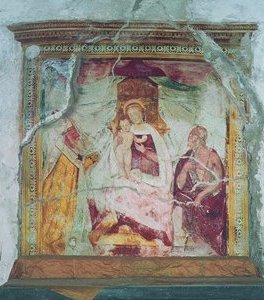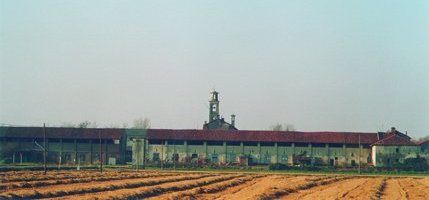- Abitanti:
Inhabitants number :9588
Superficie
Surfacekmq: 39,65
Altitudine sul mare:
Altitude:161 m
Denominazione degli abitanti:
Inhabitants:cameresi
Altre località:
Towns:Nivellina - Cascine:
Farms: Argine,
Barbieri,
Biagio,
Bollini,
Bornago,
Codemonte,
Galdina,
Margattino,
Michelona,
Montimperiale,
Nuova,
Picchetta,
Sant'Antonio,
Scagliano,
Zaboina
Festa patronale:
Patrons:S. Michele, on september
Telefono:
Phone: 0321
(Municipio/ Town Hall 0321 51 96 20)
Codice Postale:
Postal code: 28062 - Sito internet:
www.comune.
cameri.no.it
CAMERI
![]()
Situata a nordest del capoluogo e adagiata lungo il Ticino, Cameri
è citata per la prima volta in un documento dell' 840. Passato
sotto il comitato di Bulgaria, i conti di Pombia e i signori di Caltignaga,
il comune seguì dal 1202 le sorti di Novara. Dopo la distruzione
del castello nel 1358, Cameri riusc" a diventare autonoma nel
1469.
Cameri is mentioned for the first time in a document of 840. Passed under the Committee of Bulgaria, the accounts of Pombia Caltignaga and gentlemen of the town since 1202 followed the fortunes of Novara. After the destruction of the castle in 1358, Cameri became autonomous in 1469.
Chiesa Parrocchiale
L'antica chiesa dedicata a San Michele fu fondata nel Medioevo, ma
di questa costruzione non rimane più alcuna traccia. L'odierno
edificio, situato nella piazza principale, è a croce latina,
con altari laterali. L'altare maggiore, neoclassico, è del
1866 ed è ornato da angeli in legno scolpiti da Francesco Sella,
al quale è attribuita anche la statua lignea della Vergine,
posta sull'altare della Madonna delle Grazie.
Parish church
Today no traces remain of the old church of San Michele founded in the Middle ages. The present building in the main square is on a Latin cross with side altars. The neoclassic high altar dates from 1866 and is decorated with wooden angels carved by Francesco Sella, to whom is also attributed the wooden statue of the Madonna delle Grazie.
Oratorio di San Rocco
L'oratorio di San Rocco è situato nei pressi di un incrocio
nel centro del paese. Sorto intorno al 1430, aveva originariamente
struttura a croce greca. Nonostante sia stato parzialmente rimaneggiato
e mutilato della sezione di destra, del campanile e della sacrestia,
conserva un'interessante struttura architettonica derivante dalle
modifiche cinquecentesche. Di grande interesse sono gli affreschi
che decorano il suo interno, attribuiti ad Angelo Canta e datati 1525.
Di grande effetto è la fascia decorativa con fiori, bacche,
foglie d'acanto e figure grottesche posta alla base della volta ottagonale.
Nella lunetta a nord si può ammirare il Cristo sorretto da
San Giovanni e dalla Vergine. I recenti restauri hanno messo in evidenza
la capacità cromatica dell'artista.
St Rocco oratory
The oratory of St Rocco is located near crossroads in the town centre. Built around 1430, originally it was on a Greel cross. Although the right section, the bell-tower and the sacristy have been altered and partially damaged, the modifications made in the 16th century are of architectural interest. Also noteworthy are the frescoes decorating the interior, attributed to Angelo Canta and dated 1525. At the base of the octagonal vault is a striking decorative section with flowers, berries, acanthus leaves and grotesque figures. In the north lunette is the figure of Christ supported by St John and the Virgin. Recent restorations have revealed the artist’s skill in the use of colour.
La Chiesa parrocchiale di S. Michele / St Michele parish church |
La Chiesa di Santa Maria Assunta / St Maria Assunta church |
Oratorio di S. Giuseppe: |
Oratorio di San Giuseppe
L'oratorio di San Giuseppe è situato nella zona ovest del paese.
Di costruzione barocca, fu edificato fra il 1758 e il 1762. Il suo
interno è ricco di affreschi settecenteschi di grande pregio,
eseguiti da Lorenzo Peracino negli anni 1763-1764. La chiesa è
stata dichiarata monumento nazionale nell'anno 1905. Il Peracino durante
gli anni sopraccitati lavorò parecchio nel territorio camerese:
suoi sono gli affreschi che decorano la navata dell'oratorio di San
Giuseppe e probabilmente anche la tela che raffigura la Beata Vergine
con San Gaudenzio e Sant'Ignazio presso il Santuario della Madonna
di San Cassiano.
St Giuseppe oratory
The oratory of St Giuseppe is located in the western part of the town. Of the Baroque period, it was built between 1758 and 1762. In the interior are many 18th century frescoes of great value, painted by Lorenzo Peracino in 1763-1764. The church has been a national monument since 1905. In the years above mentioned Peracino worked a lot in the Cameri area: the frescoes decorating the nave of the oratory of St Giuseppe are his and the canvas illustrating the Virgin with san Gaudenzio and Sant’Ignazio in the Sanctuary of the “Madonna di san Cassiano” is also probably his.
|
Oratorio di San Biagio St Biagio oratory |
L'itinerario
delle cascine The itinerary of the old country houses
|


